NGOs and local governments in Nepal team up to deliver health services in remote areas
03rd September 2024
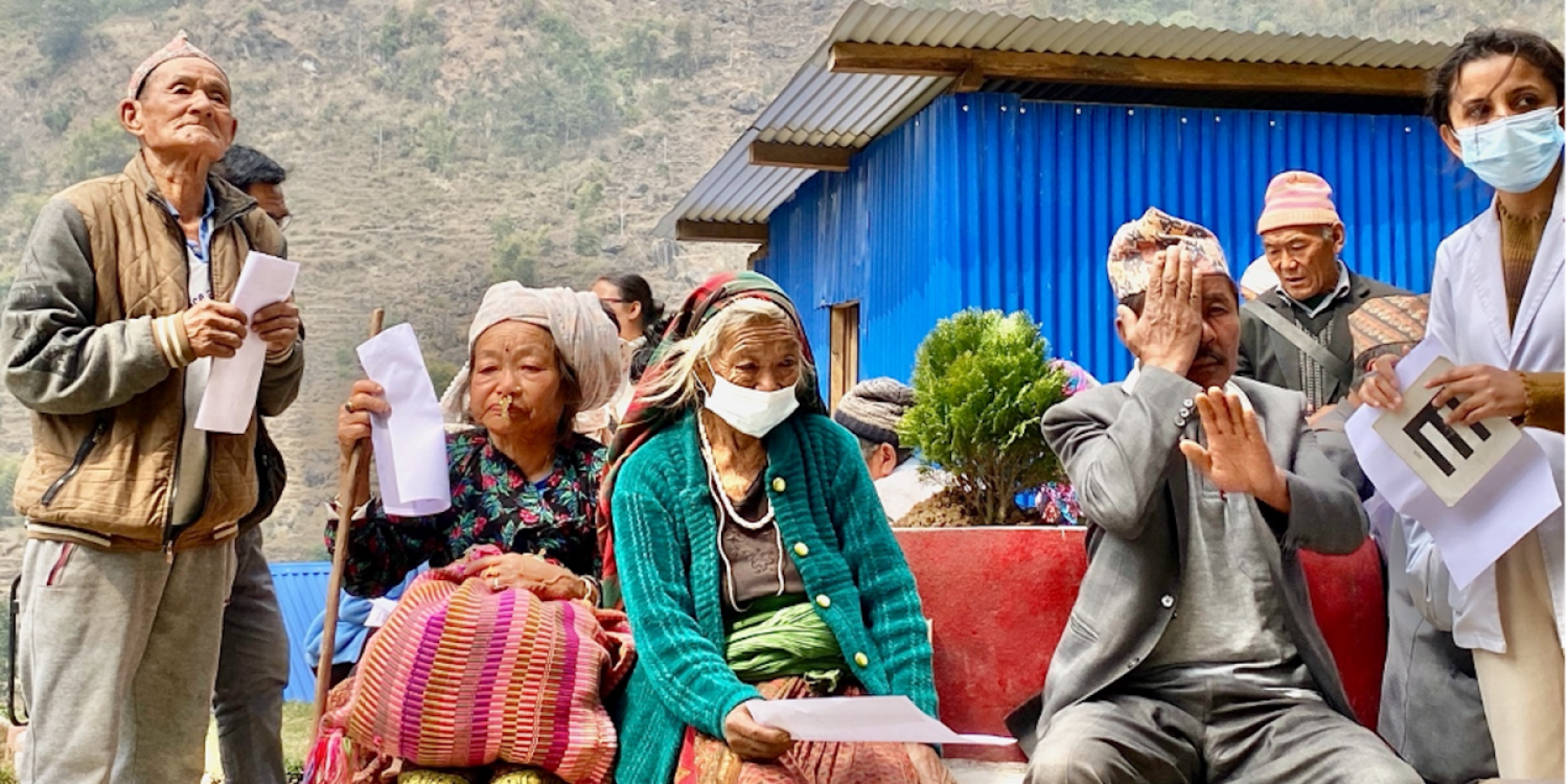
03rd September 2024
Last winter, two government health assistants who usually leave Limi Valley before it gets snowed in for the winter stayed put to provide services to residents. The only health workers in the remote community in Nepal’s northwest Humla district bordering Tibet, they remained at their posts thanks to a salary top-up of US$150 per month by the NGO Ek ek paila (EEP).
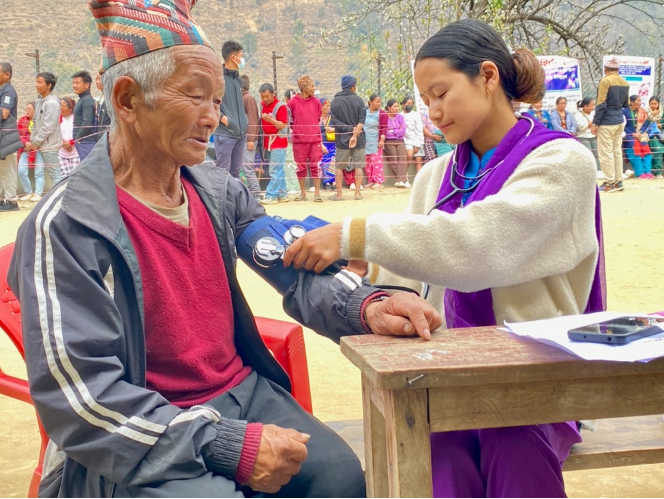
Figure 1: Measuring blood pressure at the mobile health camp, set up at a secondary school in Taplejung District, Nepal. © Marty Logan
Plans are already being made to provide the subsidies again this year, part of a larger seven-year commitment that EEP is making to Namkha rural municipality, which includes Limi Valley, says Dr Suman Thapa. The local government is building a 15-bed hospital and the NGO has agreed to set up the dental unit, pay the salaries of two staff for three years, and travel to the Valley yearly to provide specialised services.
The partnership was launched in late 2023 in order to arrange a mobile health camp that a team led by Dr Thapa, an ophthalmologist, took to Limi Valley, performing 10 cataract surgeries before the snow started falling.
Nepal’s Constitution guarantees free basic healthcare to citizens, and the government has built an extensive infrastructure, with, for example, a recent budget promising a 5, 10 or 15-bed hospital in each of the country’s 753 local governments. A 2021 survey found that 75 percent of health facilities offered basic services, compared to 60 percent in 2015.
But despite government efforts, 58 percent of healthcare spending is paid out-of-pocket by individuals, with the government picking up about 23 percent and external funding almost 14 percent, found one report. In rural Nepal, where the government system holds a strong presence, facilities often lack medicine, including the drugs included on the Essential Medicines List, meaning that service seekers often go home with paracetamol, if they get any drugs at all.
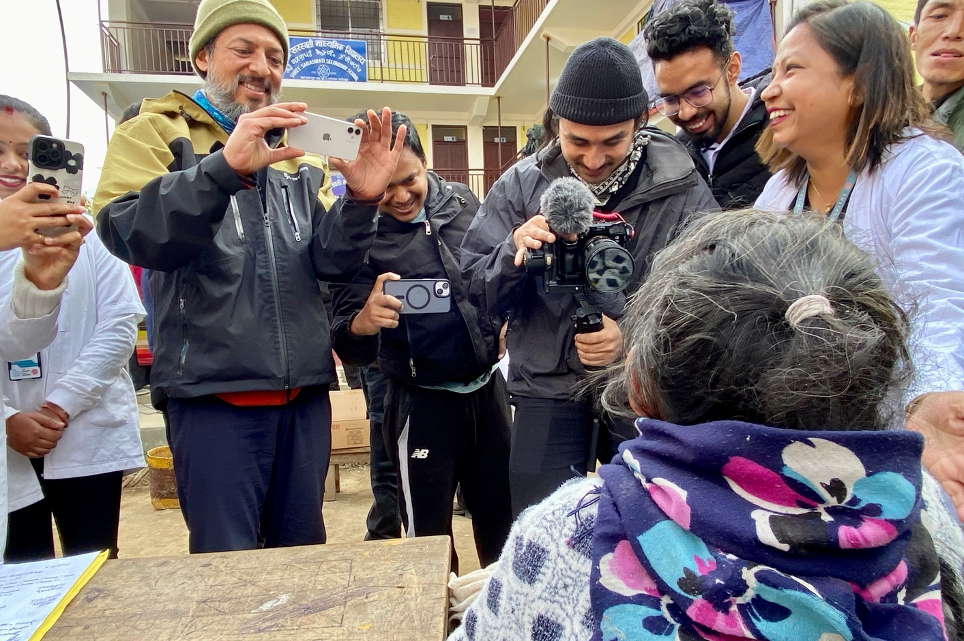
Figure 2: Dr Suman Thapa, left, takes a photo of a patient as the bandage is removed from her eye, the day after he performed her cataract surgery. © Marty Logan
As a result, mobile health camps, which can offer a wide range of services for free, are in demand. Official statistics aren’t available but a Google search finds dozens of organizations providing camps each year. Some of them are run by NGOs – often working with partners from outside Nepal – others by doctors themselves, hospitals or medical colleges. Others are done as ‘corporate social responsibility’ by private sector players such as banks, or by new local diagnostic clinics to promote their services.
EEP has now delivered 30-such camps in remote areas across the country since 2015. Increasingly since Nepal transitioned from a centralised to a federal system of government in 2017, the NGO receives requests from local governments to run a camp in its area.
“When we do it in one village, people from nearby villages, and local leaders, come and see the services and that their friends have had very successful health camps. As a result, we are being approached to set up camps in various places,” says Dr Thapa in an interview in EEP’s community health centre in Nepal’s capital Kathmandu.
Requests have come from three municipalities since EEP delivered a three-day camp in March 2024 literally at the other end of Nepal from Limi Valley, in Taplejung district, bordering Tibet to the north and India to the east. Run at a public school, the camp offered 13 types of services, from cataract and ear, nose and throat (ENT) surgery to ultrasound scans and blood tests. More than 1,600 men, women, and children received services, some of them travelling by foot or over phenomenally bumpy roads for two days to arrive.
The government hosting the camp, Phaktanglung Rural Municipality, spent US$7,475 organizing the event, says Health Coordinator Dinesh Bhattarai. The annual health budget is US$224,254, he adds.
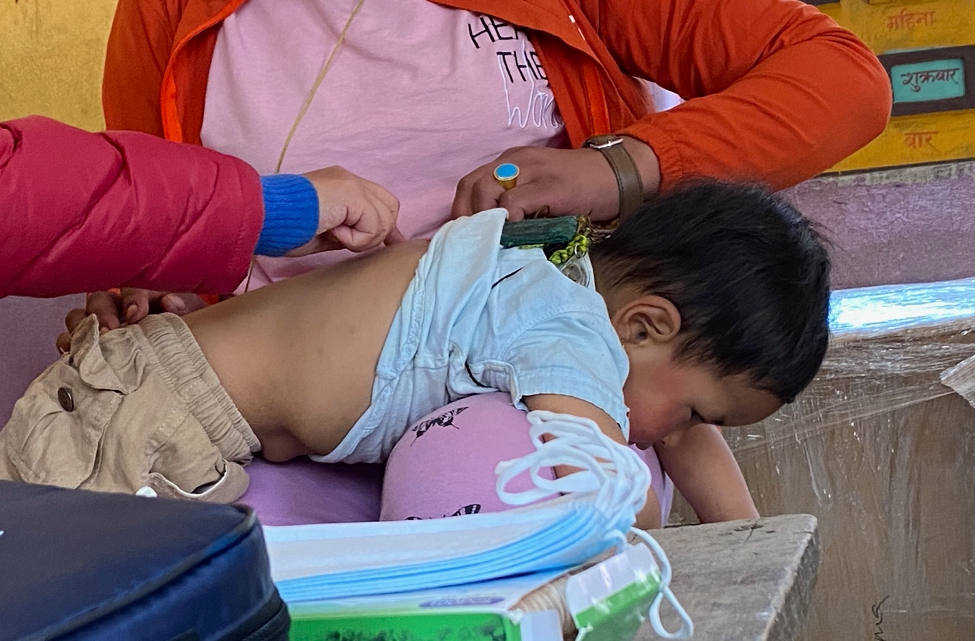
Figure 3: A doctor examines a child while his mother holds his shirt. © Marty Logan
“This is a remote area, lacking health facilities, so we requested that the camp be organised here,” he says in an interview in an empty classroom. “The municipality provides minor services but (EEP) provides more specialized services, all in one place to make it easier.”
Questions have been raised about health camps, which have operated in Nepal for decades: Do they give the central government an excuse to not deliver on people’s right to healthcare? Are they sufficiently monitored to ensure quality healthcare, including follow-up of chronic conditions?
The Gurkha Welfare Trust (GWT) started running general health camps in 1988, but in 1999 switched to offering appointment-based specialist services, says Medical Director Gerda Pohl. It also chooses patients ahead of time to ensure that GWT can follow up with them after the camp ends. “Patients who have been referred to the camp but cannot have their issue solved there are referred on, and supported financially if needed,” adds Gerda.
To ensure that patients aren’t left without medicine, Pohl says GWT refers patients with long-term conditions to doctors in the nearest district hospital, “so that follow up and ongoing care are ensured.”
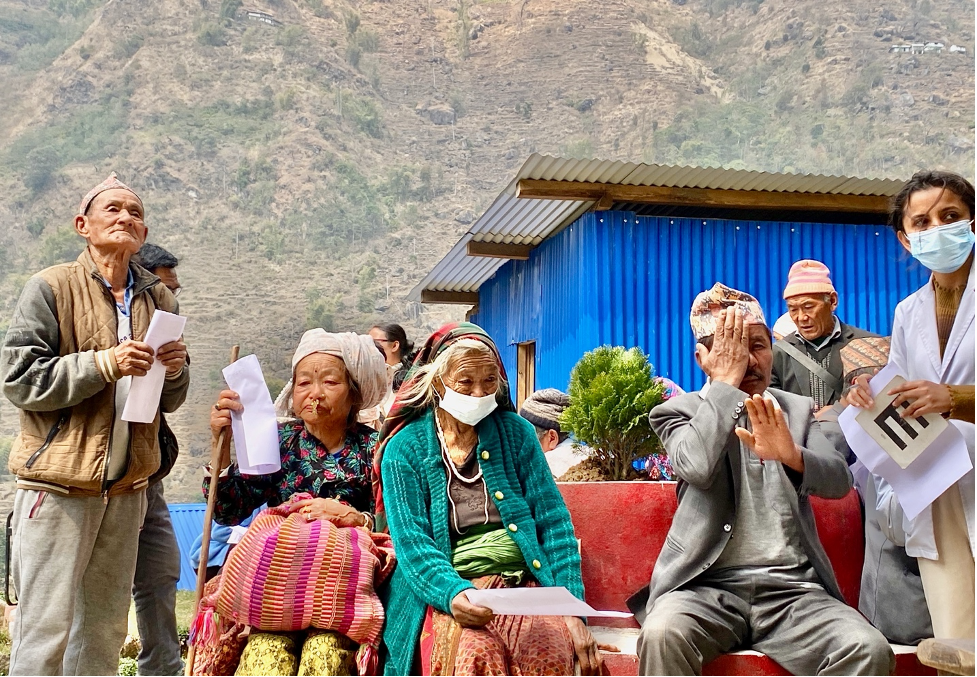
Figure 4: One man does his eye examination while others wait their turns. © Marty Logan
Cardiologist Dr Prakash Raj Regmi says he knows that some patients don’t go for follow-up after being diagnosed at one of his health camps, which he organizes via the Nepal Heart Foundation (NHF), where he is National Programme Director. Since 1988, NHF has been running camps to check cardiovascular health, especially for children, as well as to screen for hypertension and diabetes risk factors in adults.
But Regmi doesn’t agree that running the camps, which have reached 300,000 children to date, gives governments an excuse to not improve healthcare. “I don’t think so. Our work is on a small scale and is only supportive to the government.”
All photos by Marty Logan, from the Ek ek paila health camp in Taplejung district, March 2024.